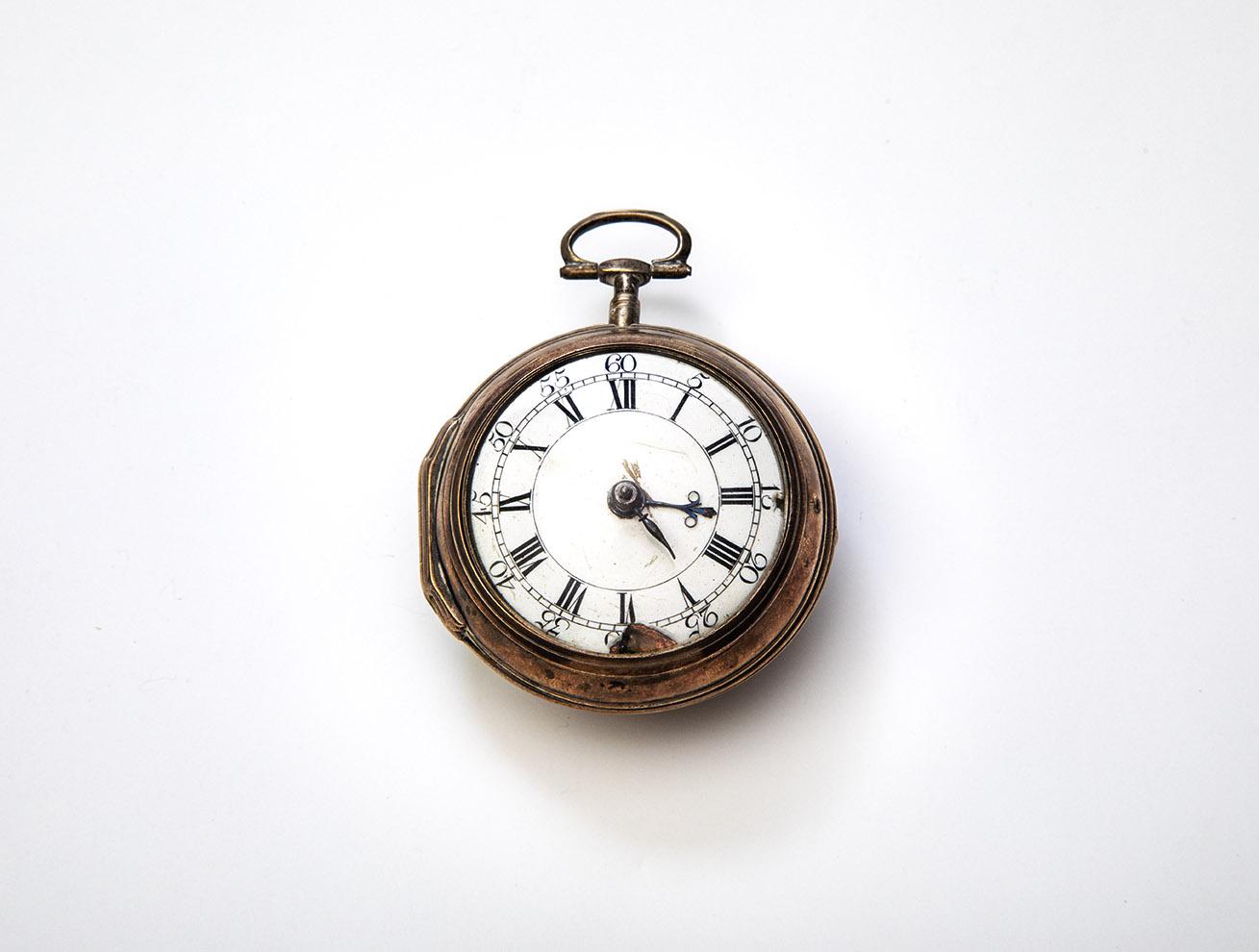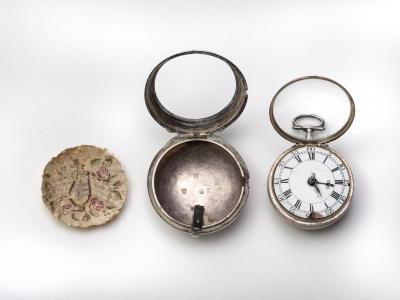Pocket watch
London
c. 1760
Maker
Watchmaker, William Midelton (dates unknown)
Silver case maker, Richard Homesley (dates unknown)
Measurements
2 1/2 in x 2 in x 1 1/8 in
Materials
Silver, glass, copper, brass, enamel
Credit Line
Historic Odessa Foundation, gift of Barbara Nowland Allison
Accession Number
2007.3
Inscription
Four London hallmarks, including date letter “D” for 1759/60, are stamped into the inside back of the case. The silversmith has been identi-fied as Richard Homesley, a specialist in silver watchcases. “Wm Midelton 2285 / London” is engraved into the top-plate of the watch movement.
Condition Notes
Much of the movement is missing, including the mainspring, mainspring barrel, chain, balance, and balance bridge. The winding arbor is bent. The enameled dial is chipped at the "VI."
Provenance
The pocket watch descended from William Corbit, to his son Daniel, to his daughter Louisa Corbit Corbit (1838-1901), to her daughter Eliza Naudain Corbit Lea (1861–1945), Louise Corbit Lea Nowland (1898-1989), to the donor.
Comments
Although American clockmakers routinely repaired, cleaned, and re-oiled watches, most watches in America were made by specialists in London, Geneva, and other European centers. Watch parts in turn were supplied by individual specialists located throughout the neighborhood and countryside. Even the silver cases that held the watch movements were supplied by specialized silversmiths, as in this instance.
By the time this watch was made, watches had become more common in America but were still the realm of prosperous men and a few women. Assuming this one is the “watch” valued at $2 in William’s 1818 estate inventory, it raises the question of how and when he acquired it. Because he was only a teenager when it was made, it was probably purchased originally by his father or perhaps one of his fathers-in-law from whom he could have acquired it.
Bibliography
Zimmerman, A Storied Past, 221-222.

